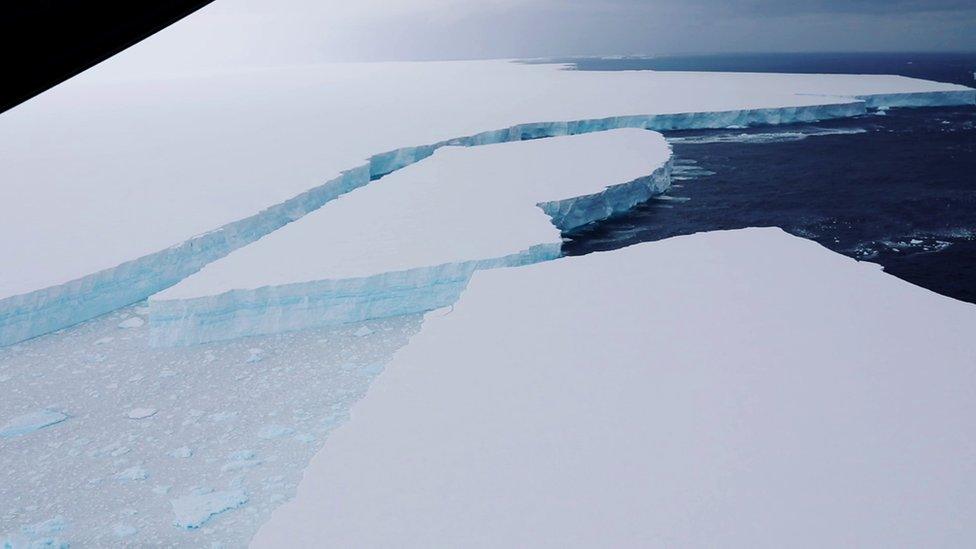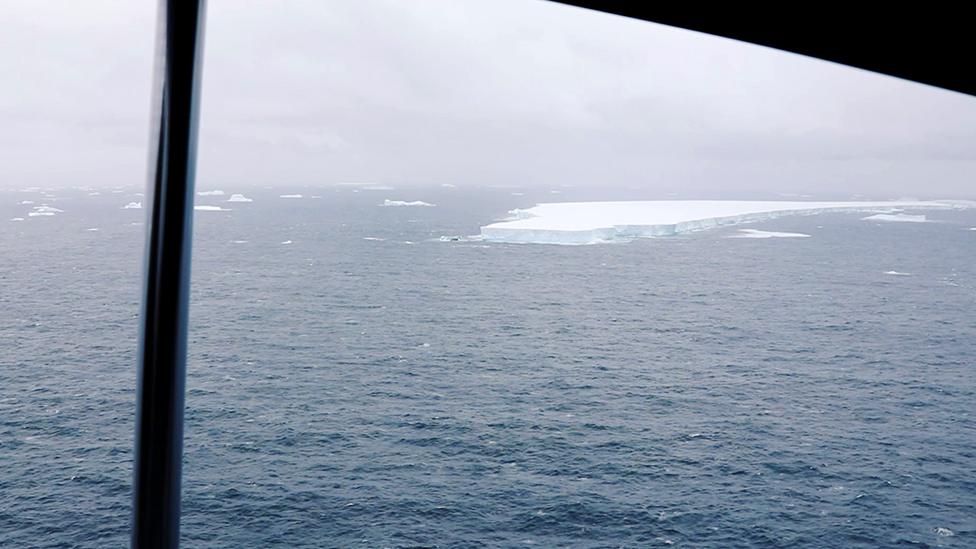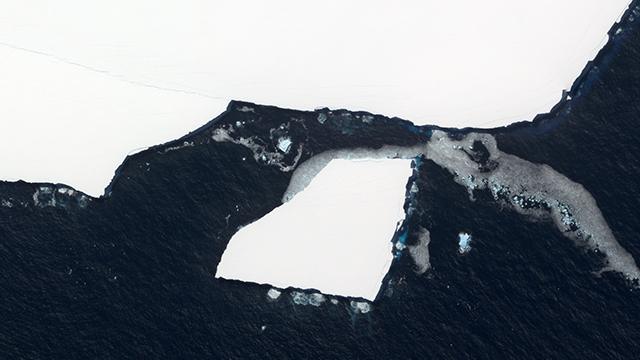RAF releases video of world's biggest iceberg
- Published
Watch: The RAF flies over iceberg A68a
The RAF has now released footage from its low-level flight over A68a, the world's biggest iceberg.
An A400m transporter was recently sent on a reconnaissance mission to assess the state of the 4,200-sq-km behemoth.
As the previously published stills have shown, A68a is crumbling; but the video also underscores the berg's great size.
Roughly on the scale of the English county of Somerset, the frozen block is drifting in the South Atlantic after breaking away from Antarctica in 2017.
It's currently just 150km offshore of the British Overseas Territory of South Georgia, external.

Viewed from space, the berg looks like a pointing hand. It's now about 150km from South Georgia
Officials from the local government are watching with keen interest to see what A68a will do next - whether it will simply drift past the island, or whether it will get caught in the shallows and anchor itself in place.
The latter scenario has significant implications for the millions of seals, penguins and other seabirds that have made South Georgia their home.
A large obstacle positioned just off the coast could make it more difficult for some of these animals to forage for fish and krill.
When a previous Antarctic ice giant did this in 2003/4, countless dead penguin chicks and seal pups littered South Georgia's beaches.
"We are now entering the key part of the year for breeding," said Mark Belchier, director of fisheries and environment for the government of South Georgia & the South Sandwich Islands.
"The nests have been built for gentoo penguins, and eggs will be laid soon. And the first seal pups have been born in the last fortnight," he told BBC News.
"Christmas is normally the peak of breeding activity."

Some broken blocks will have to be tracked for a very long time
Another concern - particularly given A68a's ragged state - is the hazard posed to shipping.
Relentless wave action is breaking off innumerable small fragments, so-called "bergy bits" and "growlers". But some of the pieces being calved are significant objects in their own right and will need tracking long into the future.
Fortunately, there isn't much ship traffic around South Georgia at the moment. The Covid-19 crisis means the 80 or so cruise ships that normally visit each year are absent; and the krill and the local toothfish fisheries aren't due to open for several months, so no fishing vessels need to be in the immediate area.
A fleet of satellites has been tasked to monitor A68a. Spacecraft sensors are tracking the movement of the berg, and the currents and winds that drive it.
The satellites are also trying to get an up-to-date estimate of the block's draught - the amount of ice that is hanging below the waterline. This will be critical in it snagging on the seafloor, or not.
Three years ago, when A68a broke free from the Larsen C Ice Shelf, the keel was measured to reach to a depth of 200m. This may have changed. The cliffs seen in the RAF video are about 30m high.
The videographer was Corporal Phil Dye. The RAF conducted reconnaissance flights over the berg on 18 November and 5 December.

The sea around A68a is now full of smaller pieces of ice

With a draft of about 200m, A68a has the potential to catch on the shallow shelf around the island
- Published2 December 2020
